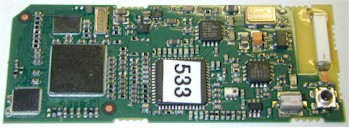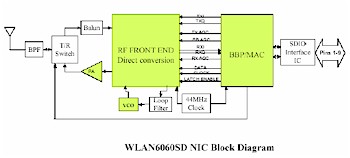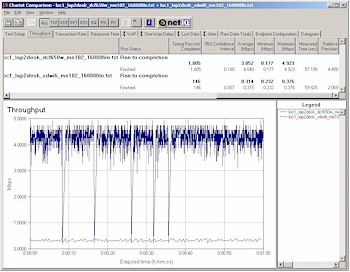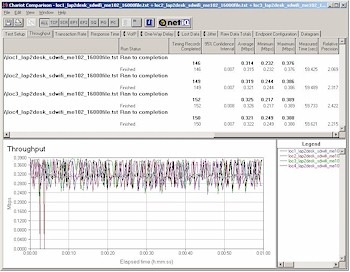Introduction

| Sandisk SD Wi-Fi card | |
|---|---|
| Summary | First 802.11b adapter in SD format. For Pocket PCs with SDIO slots only! New version available July 2004 supports Palm Zire 71 |
| Update | None |
| Pros | • 802.11b wireless for SDIO Pocket PC |
| Cons | • Less than 500kbps best-case throughput • May not associate with some 802.11g APs / routers |
SanDisk generated a good deal of excitement in the Pocket PC community with the long-awaited release of its Wi-Fi SD card back in August. I, too, was excited when my sample finally arrived last week, but after a few days of working with the card, my jets have cooled a bit…
Internal Exam
The SD WiFi is a re-branded SyChip WLAN SD6060 reference design whose innards are shown in Figure 1. It’s an impressive feat of engineering and I found myself marveling at the card each time I picked it up!
Figure 1: Internal view of the SD WiFi
(click on the image for a full-sized view)
To take advantage of this small wonder, you’ll need a device running PocketPC 2002, 2003 or CE.net. Support for Palm OS 5.X is “coming in Fall 2003”, but from what I can glean from the discussion boards, this date has slipped a few times and it could easily be next year before Palm support becomes a reality.
The card contains all the pieces found in PC Card and CF wireless adapters, and is based on a two-chip RF, BB/MAC design as shown in Figure 2.
Figure 2: SD WiFi block diagram
(click on the image for a full-sized view)
The FCC test reports indicate a Peak Power output of 17.8dBm / 60mW (averaging the Channel 1, 6, and 11 measurements), which is about average for most 802.11b and 11g cards. Note that this figure is actually EIRP, which includes 3dB gain from the card’s integrated antenna. (Also note the teeny-tiny antenna connector in the lower right hand corner of the picture – which is not exposed on the SD WiFi!)
The card has a tiny LED on its front surface, which blinks when the card isn’t associated with a network and is steadily lit when it is.
Card Management
SanDisk bundles a nice client utility (Figure 3) with the card, but Pocket PC 2003’s built-in Wireless Zero Configuration disables its AP Browsing feature and the ability to add and change connection properties.

Figure 3: SanDisk Client Utility – Status
The SanDisk client’s AP browsing (Figure 4) is much better than Microsoft’s (Figure 5), showing WEP status, advertised rates, channel and AP MAC addresses.
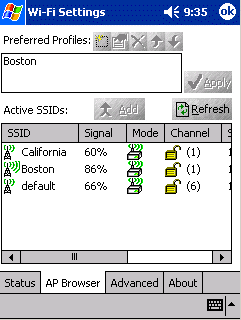
Figure 4: SanDisk Client Utility – AP Browser
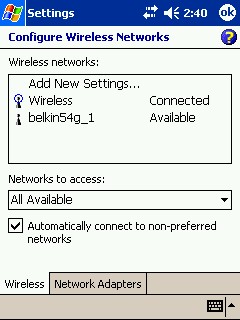
Figure 5: Pocket PC 2003 – AP Browsing
TIP: So that you don’t waste the time that I did in figuring out how to manage this little beastie on a Pocket PC 2003 machine, most of the controls are in the Zero Config utility, which is reached via the double-arrow Connectivity icon at the top of the Today screen. Tap the icon, tap Settings, tap the Advanced Tab, then tap the Network Card button. WEP settings are reached by tapping on the desired Wireless Network icon and selecting the Authentication tab.
I encountered a number of quirks in the SD WiFi’s operation. I’m not sure how, but I managed to get AP Browsing running for a short time on the H2210 iPAQ that I used for testing. Since I didn’t know that Browsing wasn’t supposed to work on this Pocket PC 2003 based device, I wasted a good deal of time trying to bring it back. I finally noticed the note at the beginning of the card’s HTML-based Utility Manual and stopped.
I also found that the Utility would suddenly quit from time to time. I could bring it back by restarting it, but it wouldn’t show any of its screens until I soft-reset the iPAQ. Finally, I found it sometimes took two extract / insert cycles to get the card to power up. It also didn’t automatically come on when I turned on the iPAQ.
Wireless Performance
NOTES
• Testing was done in using an HP H2210 ipaq running Pocket PC 2003 connecting to a NETGEAR ME102 802.11b Access Point
• Details of how we test can be found here.
The first bad news is that I had trouble getting the SD WiFi to associate with two Broadcom-based 802.11g access points (ASUS WL-300g and Belkin F5D7130). It would see them just fine, but never be able to successfully connect.
I think the problem lies in the card’s driver, since I made sure that 802.11b protection was enabled in the APs and even forced one to advertise only 802.11b-compatible transmit rates. I had no problem getting the card to hook up with a NETGEAR ME102 802.11b AP, though, and that’s what I used for my testing.
The real bad news, however, is that I’ve confirmed the observation by other reviewers and users that the card is extremely slow.
Figure 6: SD WiFi vs D-Link DCF-650W throughput
(click on the image for a full-sized view)
Figure 6 shows a composite Chariot plot of Location 1(best case) throughput tests for the SD WiFi and D-Link DCF-650W Compact flash 11b card. Since everything in the two tests is the same except the wireless cards (and their drivers) it looks like SanDisk – actually, probably SyChip – has some work to do. I tried runs with Power Save both on and off and there wasn’t any appreciable throughput difference.
Figure 7: Four location throughput comparison
(click on the image for a full-sized view)
The good news, as shown in Figure 7, is that the card’s performance doesn’t change much with range and its range is comparable to other 802.11b cards that I’ve tested. The diminutive antenna doesn’t appear to limit range, or throughput as some folks have theorized.
Finally, note that there’s no throughput hit when enabling WEP. But like most other 802.11b products, the SD WiFi doesn’t support Wi-Fi Protected access, either.
802.11b Wireless Performance Test Results
| Test Conditions
– WEP encryption: DISABLED |
Firmware/Driver Versions
AP f/w: |
||||
|---|---|---|---|---|---|
| Test Description | Signal Strength (%) | Transfer Rate (Mbps) | Response Time (msec) | UDP stream | |
| Throughput (kbps) | Lost data (%) | ||||
| Client to AP – Condition 1 | 100 | 0.315 [No WEP] 0.358 [w/ WEP] |
20 (avg) 31 (max) |
37 | 0 |
| Client to AP – Condition 2 | 66 | 0.321 | 19 (avg) 30 (max) |
38 | 0 |
| Client to AP – Condition 3 | 60 | 0.326 | 19 (avg) 31 (max) |
38 | 0 |
| Client to AP – Condition 4 | 33 | 0.322 | 27 (avg) 75 (max) |
37 | 1 |
See details of how we test.
Closing thoughts

SanDisk’s SD WiFi card is – if nothing else – a technical tour-de-force. I’m still impressed that a fully-featured 802.11b adapter is now about the size of two postage stamps laid end-to-end. What’s not impressive, though, is the extremely poor throughput and continued slip of the promised Palm OS drivers.
At this point, the SD WiFi has some growing up to do. In the meantime, heavy wireless PDA users will be better served by CF adapters or devices with built-in WiFi. f letting Aerialix do the cutting, soldering, and shrink tubing.

